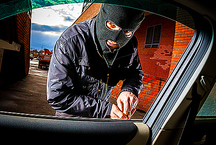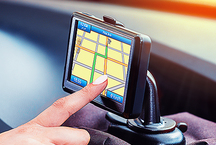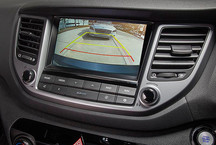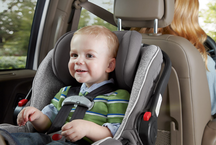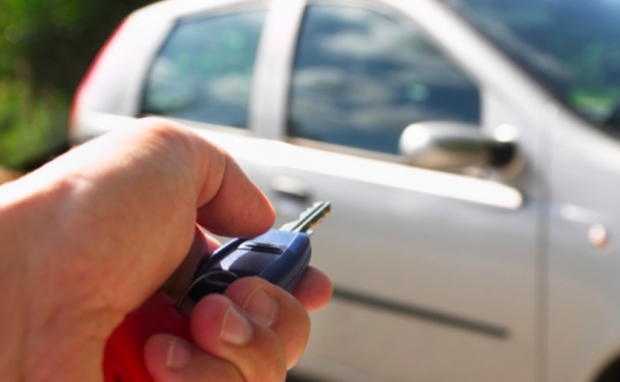
To argue with the need to protect the car from theft is unlikely anyone will - too many have already had to deal with it. Another thing is that the combination of “I would be cheaper” (and double for both the alarm and its installation) led to the fact that many adherents beat themselves in the chest, saying, they say, “no alarm against theft will protect”. In the very logic of this phrase, a serious mistake is hidden, indicating a lack of understanding of the very principle of countering theft as such: not one anti-theft device will protect against theft, if you really understand. His task is to make the hijacking so difficult that it becomes inexpedient for the hijacker.
In my practice, there was almost an anecdotal case - consistently once a week they brought us a silver all-wheel drive Renault Duster, which in the morning refused to start with a regular key. In all cases, only one chip was registered in the immobilizer’s memory, which immediately pushed to the thought of attempted hijacking. And, indeed, on close inspection one could see traces of the impact on the ignition lock. The first car was saved by a lock at a checkpoint, the second one, fortunately, competently hooked up a start-up lock ... but this story ended precisely by the appearance in the local criminal chronicle of a story about successful carjacking, you know what brand and color. The moral is obvious - the more popular a car is, the easier it is to protect it from hijacking - the criminal will have a large enough choice not to get involved in a problem car..
Today we will try to figure out what you really need to pay attention to when choosing an alarm, first of all paying attention to the protective functionality, and only after that - to the service one.
Validation Method
The term "validation" in relation to security devices refers to the way in which the owner confirms his right of access to the car and start the engine, in other words, the way it turns off the security mode.
Key fob
The most obvious way is key fob. Historically, the most popular range of alarm systems is 433 MHz, but the larger your city, the less worth recommending. The reason is simple - this range is already crowded with a multitude of low-power devices, creating, nevertheless, a noise stream, sometimes comparable to a serious jammer (in common parlance - “jammer.” Perhaps someone already faced the fact that his car stubbornly refused to open the parking of the supermarket - the signal from the key fob simply could not make its way through the background.Therefore, residents of megalopolises should choose this moment when choosing an autoalarm with a remote key.
There are two ways out of the situation. Can apply narrower communication channels - the smaller the channel width, the less noise will pass through it, and the easier it is to filter the signal. So, for example, StarLine comes in its budget series - it still uses the 433 MHz range, but the narrow channel transceiver provides good selectivity.
The second option is frequency range change at all. This, by the way, will make it harder for the hijacker to work - it will simply be impossible to consider code sends as a grabber designed for 433 MHz. A pioneer in the Russian market in this regard has become a domestic developer - AlarmTrade with their Pandora systems, which are now already operating in gigahertz bands. The same Asian manufacturers are already beginning to apply - for example, modern Tomahawk alarms operate at a frequency of 868 MHz.
Any the radio protocol naturally must be protected. Not so long ago, it was a weak point of any alarm system - the requirements for energy efficiency simply did not allow the use of signaling systems, and especially in key fobs, for powerful enough processors, and it was necessary to complicate the code breakdown by circumferential methods. It did not always work - the Scher-Khan Logicar series was especially noted in this plan, which chronically stopped responding to the regular keychain, losing synchronization with it, but for the hijackers it was not a problem in principle (I think you already understood what kind of alarm was installed on the first car in the story from the entry).
However, modern electronics has given quite powerful and at the same time energy-efficient solutions. Thanks to this, it became possible to implement a single method that now provides protection against intellectual hacking - conversational code with AES encryption. The principle of the dialogue code is based on the fact that in each communication “key-signaling” each command must be confirmed by a request from the central unit, and only with the correct answer will it be executed.
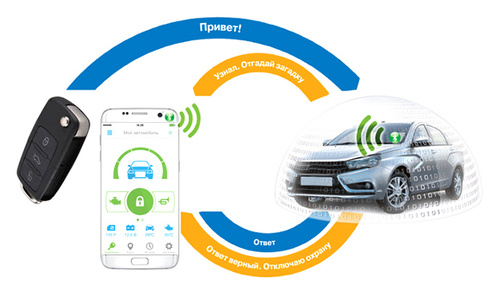
Initially, only Magic Systems (actually, the inventors of the principle), StarLine and Pandora could boast of such a market, but now the dialogue code is also used in many other systems - for example, KGB alarms switched to it in 2013.
At the same time, AES encryption is considered non-reversible, that is, it is possible to determine the code message only by the brute force method. The shortest option used in signaling is AES128 with a 128-bit key, which already provides ... Hm ... What is the number with 38 zeros called?
However, more sophisticated keys are also used in high-end alarms - for example, the current Pandora line of alarms has partially shifted to AES256, and, I'm afraid, the appearance of AES512 is not far off.
But the key fob is not the only way to validate. Often, developers abandon them altogether to increase system security.
GSM alarm
The first option, which is becoming more and more popular, is GSM-alarm systems (telematic systems). In the first of them, the control of the alarm system was carried out by sending an SMS or a call, which was not very convenient. Now, with the proliferation of high-speed mobile Internet networks, most often, alarms are allowed to access the Internet through the manufacturer’s website or a mobile application for smartphones issued by him. All the “whales” of the domestic market have already switched to this method, but owners of smartphones on Windows Phone will have to choose between StarLine and StarLine GSM alarm systems: the rest of the application manufacturers for this platform did not release.
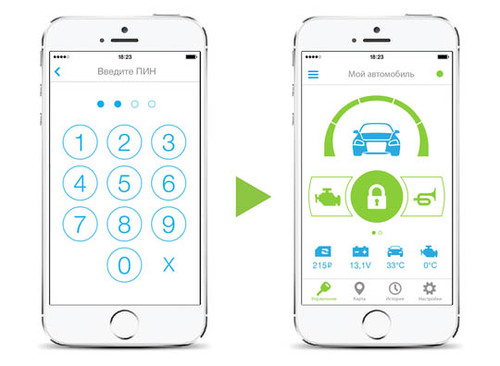
Wearable tags
The second option of validation is wearable tags that are actively implemented in Pandora systems. This company even managed to release its own smart watches RW-04 and RW-71, operating simultaneously as an alarm label. The main advantage of radio tags is that they practically do not “shine” in the surrounding air - from the point of view of the hijacker, the owner of the car uses only a regular radio key, however, if he opens the car, the system that does not detect the tag turns on the alarm and blocks the launch.
A smartphone can also be used as a label - alarms with Bluetooth support provide this capability. But it is more likely to be considered a marketing ploy, especially considering the speed with which modern smartphones land batteries.
Security zones
This term refers to events that unambiguously lead to the activation of the alarm mode and the triggering of locks. Classic set is opening doors / hood / trunk, broken glass (shock sensor), ignition on. But this set can not be called sufficient: for example, the wheels from the car can be removed quietly.
It is best to choose a car alarm with a built-in or external accelerometer - at the moment it is a must have for alarm. Accelerometer, also known as tilt / rolling sensor, triggered at critical speeds or values of moving the car along any axis - so when you try to jack up the car or tow it, the alarm will work. By the way, such sensors help to solve another problem that installers often come across - many customers complain about the ineffective performance of the shock sensor after light yard crashes with the “rubbing” of a car standing on guard. The fact is that the shock sensor should not work in such cases - its “zone of responsibility” is sharp blows that spread all over the body, that is, first of all, the breaking of glasses. Bringing his sensitivity to such a level that the alarm will be triggered when trimming and pushing into the bumper, you can become the object of hate for all neighbors. Accelerometer in such cases can be configured quite adequately.
Concerning volume sensorsthen their need is more relevant for minivans or minibuses, where rear control will not be superfluous. In the passenger car, they will actually duplicate the door switch (opening) and the shock sensor (breaking the glass).
Signaling with feedback
Initially, car alarms worked on a completely one-way protocol - the key fob contained only a transmitter, in the central unit there was only a receiver. All possibilities to notify the owner about the alarm were placed on the siren, at best - on the pager plug-in module (this, in fact, was a one-way prototype of modern telematics).
To improve the security of the car, a logical idea was used - to make the key fob itself as a detector. In feedback alarms, both the keyfob and the central unit operate in duplex mode — upon receiving a command, the alarm system executes it and sends a data packet with information about its state to the keychain. When an alarm is triggered, the corresponding parcel is also sent to the keyfob - if it is in the radio reception area, then an alarm indication will be triggered on it.
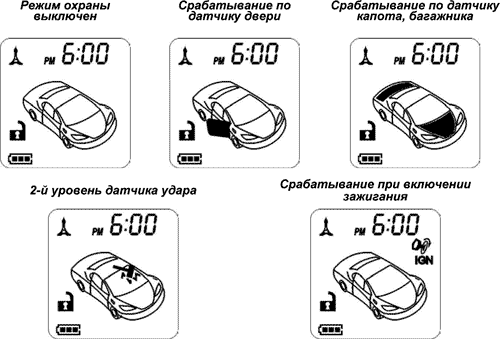
Earlier (and now in cheap alarms), LEDs were used to indicate an alarm, now LCD screens are used. So that the owner certainly noticed, a vibrating signal and a shrill buzzer are built into the key chain. In order to have the maximum possible warning, signaling manufacturers had to seriously increase the power of transmitting devices in the central units - the antenna modules became remote, so that the installer could place them in the most optimal place for work. In comparison with cheap one-way systems, the “range” of the channel has increased significantly. However, choosing a car alarm with feedback, you need to remember - the real urban conditions severely limit the radius of radio communications - if the manufacturer claims a radius of up to 2 kilometers, then perhaps it will be only in an open field. Hope for a range of more than 300 meters in the city is not worth it.
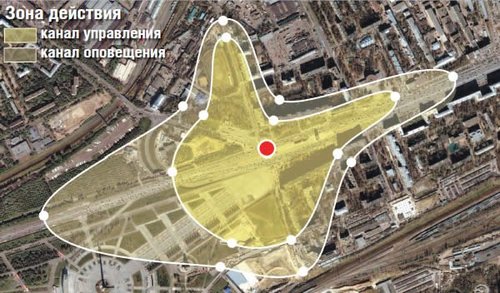
Moreover, the alert radius is always greater than the distance at which the car will receive the command from the remote key: the different transmitters power in both devices affects. However, this is often enough (for example, when the car is parked on the other side of the house). The availability of feedback for a modern alarm system can be confidently called a mandatory component - in the budget segment its capabilities are assigned to radio keys, in more advanced models it has been greatly expanded by telematics.
Autostart
Another stumbling block in disputes. I have a strong suspicion that more than half of the readers of the article will think “it’s just as easy to steal a car, they say, the hijacker will immediately start looking for where the key is hidden”. This is a gross mistake, and in the future you should not listen to those who believe in it.
Firstly, the hijacker does not need to spend time searching for the immobilizer lineman hidden in the car - and a competent installer can hide it very skillfully.It is much easier to register your chip in the memory of the controller - and much faster, namely, speed is important for the hijacker. So even in the most primitive version, when the whole key is inserted into the framework clerk, there is no serious reason to fear a deterioration in security.
In addition, the keyless bypass signaling technology has been developed for quite some time. On vehicles with CAN-bus it is possible to imitate chip recognition without its physical presence in the reader. First keyless drivers appeared as separate units (for example, Fortin F1 or iDataLink series), then the alarms themselves began to provide such an opportunity. If you need autorun, and in the list of alarms that go into the budget there are options that offer keyless bypass for your car - it is better to choose such an alarm. Such proposals are already in a fairly budget segment - you can recall, for example, the Pandora DX-50.
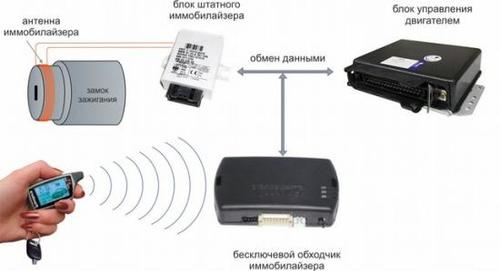
We can only speak about the real need for autorun for gasoline vehicles - alas, at idle diesel engines practically do not heat up, and even during long warm-up intervals in winter you will not be able to enjoy a warm car in the morning. However, it is also possible to connect a preheater to the startup channels, which would be an ideal option for a diesel car.
The very same autorun control is most convenient in telematics alarms. In urban environments, the signal from the remote key can not always break through even to the other side of the house, while the mobile application or SMS team will start the engine with almost one hundred percent probability.
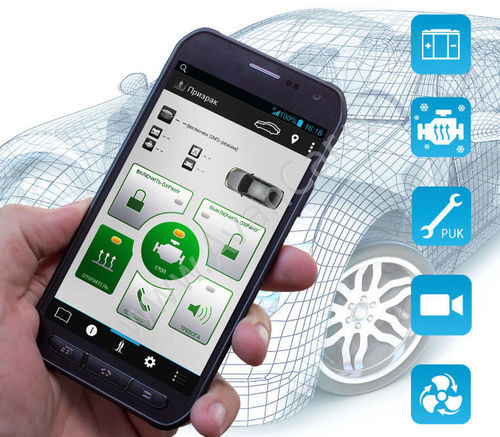
The only real minus of auto-start systems for cars with manual transmissions is the impossibility of its simultaneous operation with the gearbox locks - they block the box at the rear speed, which, of course, excludes the possibility of using autorun. For automatic boxes, everything is easier - they are locked with locks on the "parking", which does not prevent them from starting. In general, due to the features of the automatic transmission on them, autorun is much more convenient - you do not need to perform the “software neutral” algorithm, which on machines with manual transmission eliminates leaving the program switched on when arming.
Satellite systems
Integration with geotagging systems (first GPS, and then GLONASS) is now the second mandatory component of telematics systems. The main thing, choosing such an alarm, is to understand that all the functionality of satellite signaling will not carry real protection - it’s enough to jam the ranges used by geo-satellites or cellular communication with interference and the ability to track the vehicle’s position will become inaccessible.
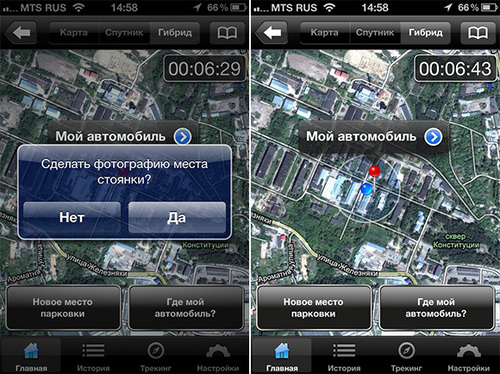
Choosing satellite signaling, one point must be taken into account - in the cheapest of them the possibility of determining the coordinates using satellite systems is an option that requires additional GPS antennas. “Out of the box” coordinates are determined by LBS, the base stations of the cellular network, which ensures acceptable accuracy only in the city.
Systems themselves sometimes enter the market frankly raw. Such was, for example, Scher-Khan Universe 1 - having an external GPS / GLONASS antenna and finding a sufficient number of satellites, the alarm could give an error up to 500 meters (!), And in a regular application the phone working exclusively on LBS turned out to be much more accurate than information obtained by two satellite constellations.
The best brands of alarms in our market
As they say in such cases, the following information reflects only the opinion of the author and so on.
Speaking of domestic manufacturers of car alarms, we, naturally, are talking primarily about Pandora and StarLine. Their products can really provide a high level of protection, plus there is a developed network of branded installation centers and technical support works well - for example, installing StarLine alarms in a certified CA, you can even expect a technical specialist to travel to the Nizhny Vasyuki - Perelygino route if problems arise. However, in the budget segment only StarLine works, Pandora is more positioned on average and premium - respectively, your idea to buy a regular alarm with the same key ring and for reasonable money they will not support.Some of the disadvantages and nuances of both brands of systems - it is better to consult the installers of the corporate center when choosing an alarm system for your car. For example, at one time, the Pandora DXL had no firmware on the Renault Kangoo, and the analog connection to this machine was by no means the most convenient. StarLine, switching to the modular system in the current generation, can confuse many - one and the same alarm system can be sold in several trim levels, and you should carefully get acquainted with them in order not to buy a car with a CAN connection optimally, a kit without a CAN module .
Less "on hearing" the name of the St. Petersburg company MagicSystems, although a loss in marketing does not mean a loss in reliability or degree of protection - their anti-theft systems like MS Agent Pro can be called one of the best offers on our market.
Of the more affordable options are quite good modern alarm systems. Tomahawk - This also applies to the build quality, and their compliance with current requirements. It was pleasant to see high-frequency radio modules, an interactive code and 128-bit encryption for affordable money from an Asian manufacturer. Close to them and alarm KGBwhich can also be considered a worthy budget choice.
More about best models of autosyncals read our ranking.
Alarms of the lower segment (thousands of them!) Can offer little in terms of protection. And, although even here there are already models with interactive code, their resistance to rough cracking is not serious, if only because it is impossible to create distributed circuits of launch locks. If we consider that when buying a cheap alarm and at work the installer is trying to save money, then it is difficult to speak about the seriousness of car protection.
Competent installation
In the end, the effectiveness of any anti-theft device depends on the work of the installer. Many times we had to see cars where, to extract the central unit together with a bundle of wires, it was enough to kick a "torpedo" with your foot - what kind of protection is there?
